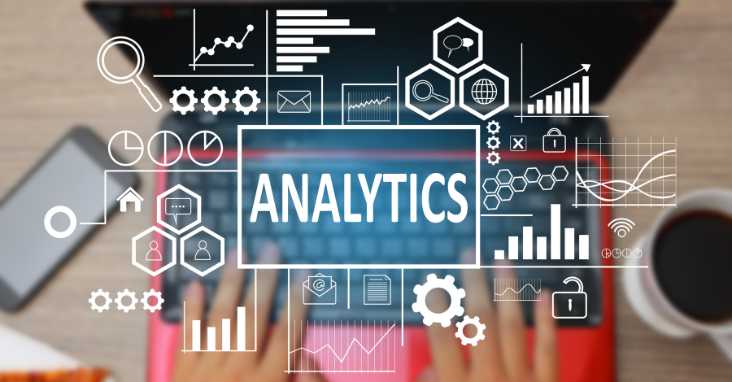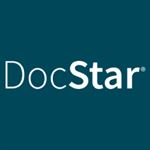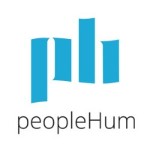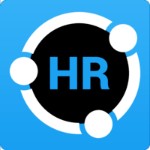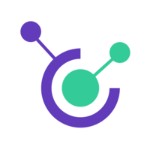If you’re here, I bet you’re curious about the benefits of workforce analytics and how it can transform your business, right? Well, you’ve come to the right place. Let’s dive into this intriguing world together, and I’ll walk you through everything you need to know.
First off, let’s set the stage. Imagine you’re the captain of a ship. Your crew is your team, and the vast ocean is the competitive market. To navigate these waters successfully, you need more than just a good crew; you need to understand every aspect of your ship, the sea, and how they interact.
That’s where the workforce analytics software comes in. It’s like having an advanced navigation system that tells you not just where you are, but also the best route to take and potential hurdles along the way.

What is Workforce Analytics?
To truly grasp the concept of workforce analytics, let’s break it down into its essential components and explore its various dimensions.
Definition and Scope
- Definition: Workforce analytics is a methodical approach to managing people by making data-driven decisions. It involves collecting, analyzing, and interpreting various employee-related data points.
- Scope: The scope of workforce analytics extends from basic HR functions, like tracking attendance and turnover rates, to more complex analyses, such as predicting future workforce needs and identifying factors that influence employee performance and satisfaction.
Types of Data Analyzed
- Demographic Data: Age, gender, education, and other background information.
- Performance Metrics: Productivity levels, sales figures, quality of work, and achievement of targets.
- Behavioral Data: Engagement levels, teamwork and collaboration metrics, and leadership qualities.
- Psychometric Data: Personality tests, employee satisfaction surveys, and cultural fit.
Methods of Data Collection
- Surveys and Feedback Forms: Regularly collecting feedback from employees.
- HR Systems and Records: Utilizing data from HR management systems, like payroll and time tracking.
- Performance Tracking Tools: Using specialized software to track employee performance metrics.
- Social Media and External Sources: Analyzing public data from LinkedIn profiles or other relevant platforms.
The Analytics Process
- Data Collection: Gathering data from various internal and external sources.
- Data Cleaning and Integration: Ensuring the data is accurate and consistent.
- Data Analysis: Applying statistical methods and analytics tools to interpret the data.
- Insight Generation: Translating data findings into actionable insights.
- Decision Making: Using insights to make informed decisions about HR strategies and practices.
Applications in Business
- Strategic Workforce Planning: Forecasting future workforce requirements based on business growth and market trends.
- Talent Management: Identifying key traits of high-performing employees and using this data in recruitment and training.
- Employee Retention Strategies: Understanding the factors that contribute to employee turnover and developing strategies to increase retention.
- Performance Enhancement: Analyzing performance data to identify areas for improvement and personal development.
The Role of Technology
- Advanced Analytics Tools: Leveraging software like Tableau or PowerBI for in-depth data analysis.
- AI and Machine Learning: Using AI to predict trends and employee behavior.
- Cloud Computing: Storing and processing large volumes of data efficiently.
Challenges and Considerations
- Data Privacy: Ensuring compliance with data protection laws and ethical considerations.
- Data Interpretation: The need for skilled professionals who can accurately interpret analytics results.
- Integration of Data: Combining data from disparate sources into a cohesive analytics strategy.
- Actionable Insights: Translating data into practical and effective HR strategies.
In essence, a workforce analytics dashboard is more than just a set of data points; it’s a comprehensive approach to understanding and managing your workforce effectively. It blends data science with human resource management to provide a holistic view of your workforce, helping you make more informed and strategic decisions. This powerful tool, when used correctly, can significantly improve the efficiency and effectiveness of your HR functions, leading to a more engaged, productive, and satisfied workforce.

Why is Workforce Analytics Important?
In today’s data-driven world, gut feelings and guesswork just don’t cut it anymore. You need concrete data and statistical models to back your decisions, especially when it comes to managing your most valuable asset – your people. Workforce analytics provides that data, giving you a clearer picture of your workforce and helping you to:
- Identify strengths and weaknesses in your team.
- Predict future trends and prepare accordingly.
- Optimize workforce management for better productivity.
- Enhance employee satisfaction and retention.

The Evolution of Workforce Analytics
Workforce analytics isn’t a new concept. It has been around in some form for decades. However, with the advent of advanced technology and big data, its capabilities have skyrocketed. Today, we have sophisticated tools and software that can analyze vast amounts of data quickly and provide actionable insights.

The Power of Data-Driven Decisions
Imagine being able to predict when your top performer might leave or understanding the exact training your team needs to excel. That’s the power of data-driven decisions made possible by modern workforce analytics now. It’s about turning raw data into valuable insights that can guide your strategic decisions.

Setting the Foundation for Workforce Analytics
Before you jump into the deep end, it’s important to set the right foundation. This means having clear objectives, ensuring data quality, and getting your team on board with this data-driven approach.

Key Areas of Focus in Workforce Analytics
Workforce analytics can be applied in various areas, such as:
- Talent Acquisition: Predicting hiring needs and identifying the best candidates.
- Employee Performance: Understanding what drives high performance and how to replicate it.
- Learning and Development: Tailoring training programs based on employee needs and performance data.
- Employee Retention: Identifying factors that contribute to employee turnover and addressing them.
Summary Points:
- Workforce analytics is about using data to make informed decisions about your workforce.
- It’s crucial in today’s competitive business environment.
- Its evolution has been powered by advancements in technology.
- Data-driven decisions can significantly impact employee management and business outcomes.
- Setting the right foundation for workforce analytics is key.

FAQ
Q1: What is Workforce Analytics?
Answer: Workforce analytics is the process of collecting, analyzing, and interpreting data related to your employees. It encompasses a range of metrics, from performance and productivity to engagement and retention. By using workforce analytics, businesses can make data-driven decisions to optimize their human resources and improve overall organizational and business performance throughout.
Q2: Why is Workforce Analytics Important?
Answer: In today’s fast-paced business world, intuition alone isn’t enough to manage your workforce effectively. Workforce analytics provides concrete data that helps in understanding workforce trends, predicting future needs, and making informed decisions. This leads to better talent management, improved employee satisfaction, and ultimately, greater business success.
Q3: How Has Workforce Analytics Evolved Over Time?
Answer: Initially, workforce analytics was mainly about basic HR reporting and tracking simple metrics. With technological advancements, it has evolved into a sophisticated practice that leverages big data, AI, and machine learning. Today, it not only has historical data and provides insights into current workforce dynamics but also predicts future trends and helps in strategic planning.
Q4: What Are the Key Areas of Focus in Workforce Analytics?
Answer: Key areas include talent acquisition (identifying the best candidates), performance management (understanding what drives high performance), learning and development (tailoring training programs to business leaders), and employee retention (identifying and addressing turnover factors).
Q5: How Does Workforce Analytics Help in Talent Acquisition?
Answer: It helps by analyzing past hiring data and current market trends to predict future hiring needs. It can also identify the traits of successful employees, thus less recruitment costs and aiding in selecting candidates who are more likely to excel in your organization.
Q6: Can Workforce Analytics Improve Employee Retention?
Answer: Absolutely! By analyzing data on employee turnover, and employee experience, you can identify common patterns and reasons behind it. This insight allows you to take proactive measures to improve employee satisfaction and engagement, reducing turnover rates.
Q7: How Does Workforce Analytics Impact Employee Performance?
Answer: It allows managers to identify key drivers of high performance and areas where employees might be struggling. With this information, you can create targeted development programs, offer personalized feedback, and set more effective performance goals.
Q8: What Role Does AI Play in Workforce Analytics?
Answer: AI and machine learning are revolutionizing workforce analytics by enabling the analysis of large datasets more efficiently. They provide predictive insights, automate routine data analysis tasks, and help in uncovering patterns that might not be visible to the human eye.
Q9: How Can Small Businesses Implement Workforce Analytics?
Answer: Small businesses can start by identifying their key HR challenges and then selecting appropriate tools that fit their budget and needs. They can begin with basic analytics capabilities provided by their existing HR software or invest in specialized tools as they grow.
Q10: What Are the Challenges in Implementing Workforce Analytics?
Answer: Challenges include data privacy concerns, ensuring data quality and accuracy, integrating data from different sources, using statistical models and developing the necessary skills within the HR team to analyze and interpret data effectively. Moreover, aligning analytics insights with business strategies can also be a hurdle for some organizations.

Software Tools for Workforce Analytics
In the realm of workforce analytics, the right tools can make all the difference. They not only simplify data analysis but also provide insights that can lead to meaningful business decisions. Let’s dive deeper into some of the best workforce analytics tools already out there and explore why they might be a perfect fit for your organization.
Tableau
Why it’s useful: Tableau stands out for its user-friendly interface and powerful data visualization capabilities. It allows you to create interactive and shareable dashboards, which makes understanding complex data sets much simpler. Whether you’re looking at employee performance metrics or tracking HR analytics, Tableau can transform numbers into actionable insights.
PowerBI
Why it’s useful: Microsoft’s PowerBI is renowned for its integration capabilities, especially within the Microsoft ecosystem. This tool is ideal for businesses already using Microsoft products. It offers robust data analytics and reporting features, enabling you to consolidate various data sources into a single, coherent report.
SAP SuccessFactors
Why it’s useful: SAP SuccessFactors is a more comprehensive employee data solution, particularly well-suited for larger organizations. It doesn’t just analyze workforce data; it integrates it with your overall HR strategy. From payroll and employee engagement to performance and talent management, it provides a holistic view of your workforce.
People Analytics by LinkedIn
Why it’s useful: This tool leverages LinkedIn’s vast network data to offer unique insights, particularly in recruitment and talent management. It helps in understanding industry trends, the competitive landscape, and provides data-driven recommendations for talent acquisition and development.
Workday Human Capital Management
Why it’s useful: Workday offers a cloud-based solution for workforce planning and analytics. It’s particularly effective for organizations looking to align their workforce strategy with business goals. Workday provides insights into workforce skills and capabilities, helping to plan for future needs and changes.
IBM Watson Talent Insights
Why it’s useful: IBM Watson Talent Insights is known for its advanced AI capabilities. It can analyze large volumes of HR data and provide predictive insights, helping you to make more informed decisions about your workforce. Its AI component also means it gets smarter over time, offering increasingly sophisticated workforce analysis too.
Visier People
Why it’s useful: Visier People is designed for simplicity and speed, providing clear, actionable insights. It excels in workforce planning and workforce analytics projects, offering interactive visualizations and the ability to benchmark your data against industry standards.
UltiPro by Ultimate Software
Why it’s useful: UltiPro provides comprehensive HR, payroll, and talent solutions, with a strong focus on workforce analytics. It’s particularly effective for businesses looking for an all-in-one solution that covers everything from basic HR functions to advanced workforce analytics platforms.
Each of these tools offers unique features and capabilities, making them suitable for different types of workforce analytics evolving, organizations and needs. When choosing a workforce analytics tool, consider factors like the size of your organization, existing software ecosystems, specific HR and analytics needs, and the level of complexity you’re comfortable managing. The right tool can unlock the full potential of your workforce data, leading to smarter, more strategic decision-making.

Conclusion
Alright, we’ve covered a lot of ground here, haven’t we? From understanding what workforce analytics is to exploring its numerous applications, we’ve journeyed through the ins and outs of this powerful tool. It’s clear that in the modern business landscape, leveraging data to make informed decisions about your workforce isn’t just a nice-to-have; it’s essential.
The Future of Workforce Analytics
As we look ahead, the role of predictive workforce analytics will only become more integral to business success. With advancements in AI and machine learning, the insights we can gain from data will become even more nuanced and predictive. The future of workforce analytics is not just about understanding what’s happening now but being able to forecast future trends and prepare for them.
The Human Element
It’s also important to remember that while data is powerful, it’s not the be-all and end-all. The human element – intuition, experience, and understanding – plays a crucial role in interpreting data and making decisions. The key is to find the right balance between data-driven insights and human judgment.
Continuous Learning and Adaptation
Embracing workforce analytics is a journey, not a destination. It requires continuous learning, adaptation, and a willingness to experiment. As you become more comfortable with data, you’ll find new ways to apply predictive analytics in your business.
Final Thoughts
So, there you have it. Workforce analytics is a game-changer, and it’s within your grasp. Whether you’re just starting out with workforce analytics trends or looking to deepen your existing practices, the time to harness the power of data is now. Embrace it, experiment with it, and watch as it transforms your approach to workforce management.

